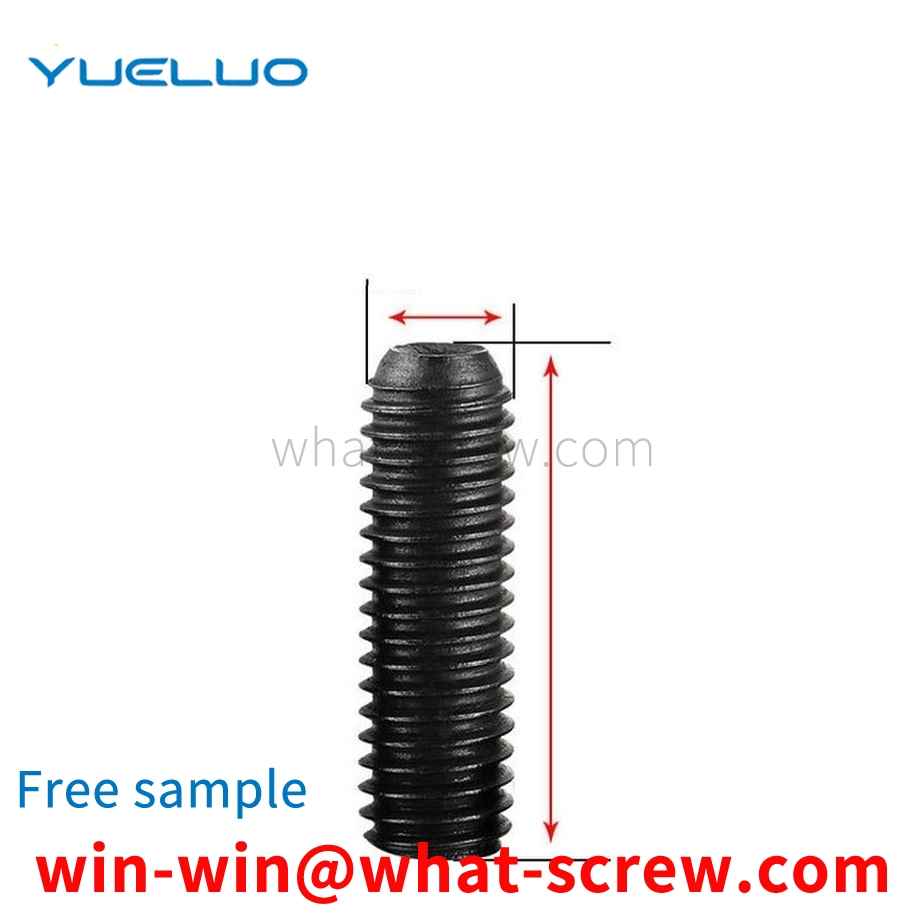M4 grounding screw used to fix the grounding wire on household appliances and other equipment, the stud is cylindrical, and the thread is perpendicular to the end (section) surface. However, the screw holes on the equipment all have tapping guide grooves for sinking and guiding due to the manufacturing process requirements. When fixing the ground wire, if the screw is not positioned accurately (the screw is inclined), the screw is pressed down hard, which is easy to cause the screw and the screw. The screw hole bites the teeth, and after biting the teeth, it is easy to cause the screw to loosen or fall off, posing a safety hazard.
Copper nuts, also known as embedded nuts and embedded copper nuts or plastic embedded nuts, are divided into hot melt copper nuts, hot pressed copper nuts, embedded copper nuts and ultrasonic copper nuts according to different methods of use. This product is widely used in mobile phones. Shell / Pen meter shell / injection molding / insert of plastic parts, used as an internal thread. Generally embossed on the outer circle. To prevent sliding.
National standard lock nut GB/T 6182-2000 Type 2 non-metallic insert hexagonal lock nut. GB/T 6183.1-2000 Non-metallic insert hexagonal flange lock nuts. GB/T 6183.2-2000 Non-metallic insert hexagonal flange lock nuts - fine pitch. GB/T 6184-2000 Type 1 All-Metal Hexagon Lock Nuts. GB/T 6185.1-2000 Type 2 all-metal hexagonal lock nuts. GB/T 6185.2-2000 Type 2 all-metal hexagonal lock nuts with fine teeth. GB/T 6186-2000 Type 2 All-Metal Hexagon Lock Nuts Grade 9. GB/T 6187.1-2000 All-metal hexagonal flange lock nuts. GB/T 6187.2-2000 All-metal hexagonal flange lock nut with fine teeth. GB/T 889.1-2000 Type 1 non-metallic insert hexagon lock nuts. GB/T 889.2-2000 Type 1 non-metallic insert hexagonal lock nut fine pitch.
According to the force of the connection, it is divided into ordinary and hinged holes. According to the shape of the head: there are hexagonal head, round head, square head, countersunk head and so on. Among them, the hexagonal head is the most commonly used. Generally, countersunk heads are used where connections are required. The English name of the riding bolt is U-bolt. It is a non-standard part. The shape is U-shaped, so it is also called a U-bolt. There are threads on both ends that can be combined with nuts. It is mainly used to fix tubular objects such as water pipes or sheets such as automobile plates. Springs are called riding bolts because of the way they fix things like a person rides a horse. According to the length of the thread, it is divided into two categories: full thread and non-full thread. According to the thread type, it is divided into two types: coarse thread and fine thread. The coarse thread type is not displayed in the bolt mark. The bolts are divided into eight grades: 3.6, 4.8, 5.6, 6.8, 8.8, 9.8, 10.9, and 12.9 according to their performance grades. Among them, the bolts above grade 8.8 (including grade 8.8) are made of low-carbon alloy steel or medium-carbon steel and are heat-treated (quenched). + Tempering), commonly known as high-strength bolts, and below grade 8.8 (excluding 8.8) are commonly known as ordinary bolts. Ordinary bolts can be divided into three grades: A, B, and C according to the production accuracy. Grades A and B are refined bolts, and grade C is rough bolts. For connecting bolts for steel structures, unless otherwise specified, they are generally ordinary rough grade C bolts. There are differences in the processing methods of different grades. Usually the corresponding processing methods are as follows: ① The bolts of grade A and B bolts are processed by lathes, with smooth surfaces and accurate dimensions. High, rarely used; ②C-grade bolts are made of unmachined round steel, the size is not accurate enough, and its material property grade is 4.6 or 4.8. The deformation is large during shear connection, but the installation is convenient and the production cost is low. It is mostly used for tensile connection or temporary fixation during installation.
Inch Screws C-1: Thread Code: The denominator is marked as 8, and then the numerator is directly called the number. Ex: 1/8 x 0.50 –PPB: 1 Thread screw x 0.50” long, PPB Ex: 5/16 x 0.50 –PPB = 2.5/8 x 0.50-PPB : 2 ½ inch screw x 0.50” long, PPB Ex: 5/32 x 0.50 –PPB =1.25/8 x 0.50-PPB: 1 ½ ½ inch screw x 0.50” long , PPB Ex: 1/4 x 0.50-PPB= 2/8 x 0.50-PPB: 2-point screw x 0.50” long, PPB Note: Coarse or fine pitch is sometimes indicated. UNF: Fine pitch: more commonly used in the electronics industry UNC: Coarse Thread: More commonly used for heavy machinery construction. Ex: 3/8 x 0.50, UNF –PPB: 3 point fine thread screw x 0.50” long, PPB. C-2: Length Code: In inches, must be multiplied by 25.40 is converted to mm. Measured with a buckle gauge, it is a metric thread when it matches the metric thread, and an inch thread when it matches the inch thread. You can also use a caliper to measure the outer diameter and pitch of the thread. The outer diameter of the metric thread is in millimeters, Such as 6, 8, 10, 12, 18, 20 mm, etc., the pitch is also in millimeters, such as 0.5, 0.75, 1, 1.5, 2, 3, etc. The outer diameter of the imperial thread is in inches, (per inch Equal to 25.4 mm) such as 3/16, 5/8, 1/4, 1/2, etc. Therefore, the reading of the outer diameter with a metric caliper often has irregular decimals. The inch pitch is expressed by how many teeth per inch. Set the caliper at 25.4 mm, align one caliper tip with the thread cusp, and the other caliper tip, if aligned with the thread cusp, is an inch thread, and if the thread cusp is not aligned, it should be a metric thread. The tip is printed on the white chalk. The chalk is clear and easy to measure. To measure the metric pitch, you should measure a length, such as 10, 15, 20, millimeters, etc., count how many teeth are included, and calculate the pitch in inches. The specified thread specification is inch thread, such as: G1. Metric threads are specified in metric units of millimeters. Such as: M30. The imperial system is determined by how many teeth there are in one inch (2.54 cm), generally a 55-degree angle. The metric system is the pitch determined by the distance between the two tooth tips, usually a 60-degree angle anchor screw: tighten the machine, etc. Screws for use on the ground. Also called anchor bolts. The difference between British and American screws is difficult to distinguish visually. The difference between British and American screws is that the rolling angle of British screws is 55 degrees, while the rolling angle of American screws is 60 degrees. These two standard screws are used in most screws. It can be used in general, but 1/2 size screws are not allowed, because the standard thread of inch 1/2 is 1/2-12 teeth, while the American system is 1/2-13 teeth.
We have many years of experience in the production and sales of screws, nuts, flat washers, etc. The main products are: cup head hexagon socket head screws and bolts, hexagonal pressure rivet nuts, thin wire external bolts, 8.8 grade high-strength fine pitch hexagon nuts and other products, we can provide You have the right fastener solution for you.



















 Service Hotline
Service Hotline




